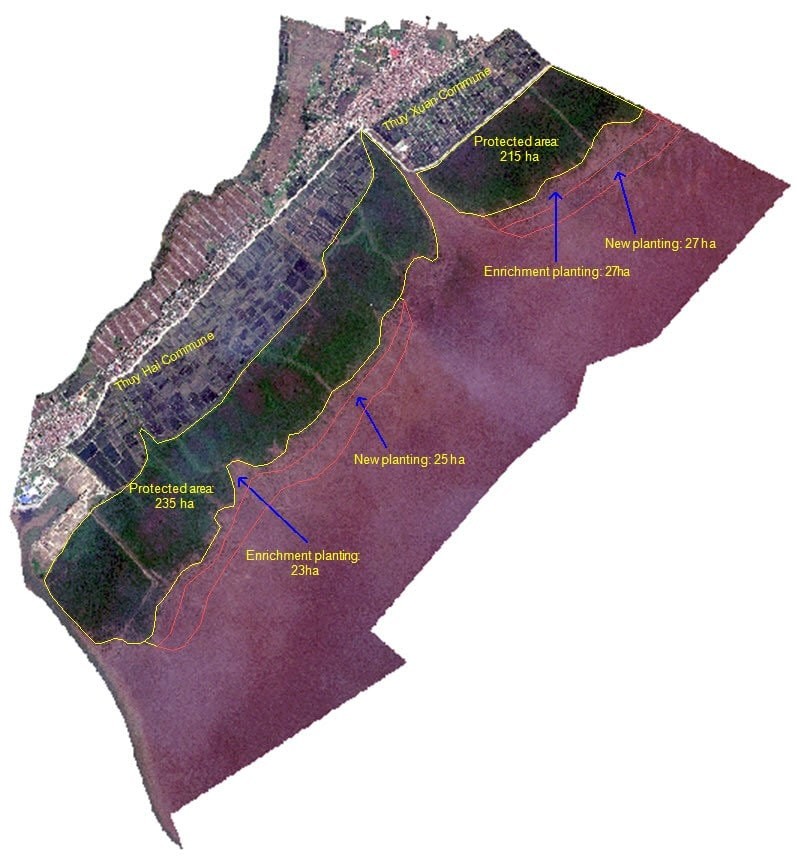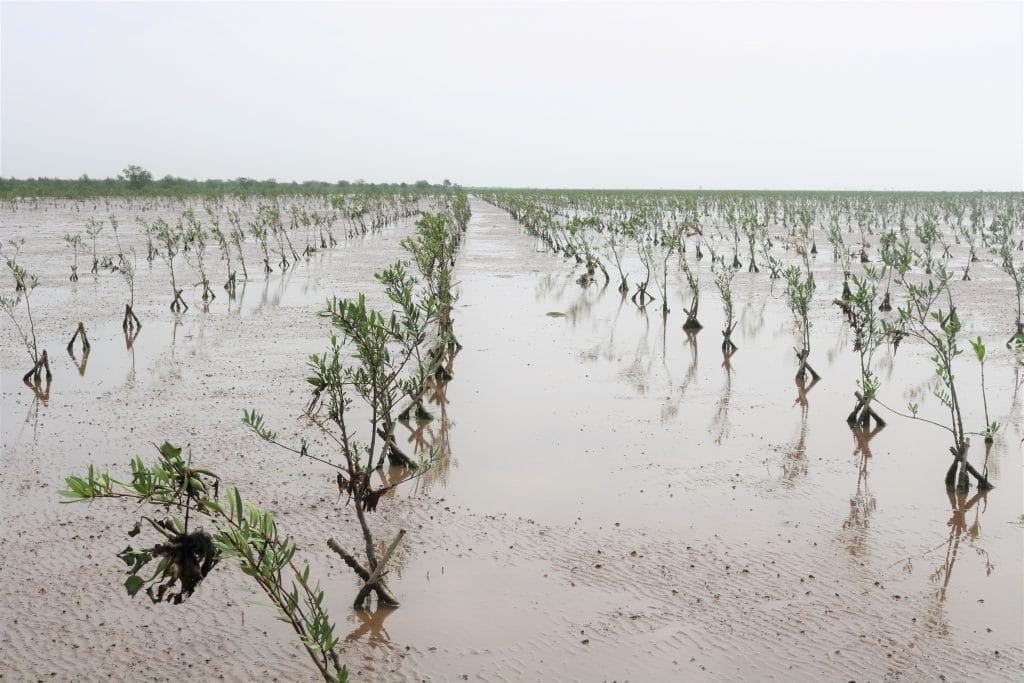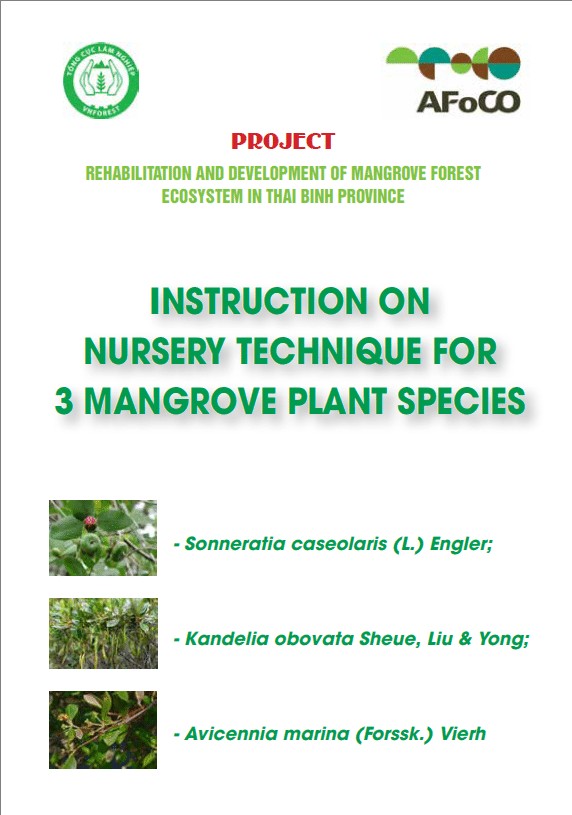Are you planning a trip to the Red River Delta and curious about Thai Binh province? What Is The Total Area Of Thai Binh Province? SIXT.VN is here to help you discover this fascinating region and other destinations in Vietnam. Thai Binh province covers approximately 1,546.5 square kilometers, offering a blend of coastal landscapes, agricultural lands, and historical sites. Explore the beauty of Thai Binh with SIXT.VN, your trusted travel partner. Enjoy seamless travel experiences with our reliable services.
1. Understanding Thai Binh Province
What is the total area of Thai Binh province? Thai Binh province, located in the Red River Delta of Vietnam, covers an area of approximately 1,546.5 square kilometers. This area is comprised of diverse landscapes, including coastal regions, fertile agricultural lands, and bustling towns. Understanding the geographical context of Thai Binh is essential for planning your visit and appreciating its unique characteristics.
1.1. Geographical Location
What are the key geographical features of Thai Binh? Thai Binh province is situated in the heart of the Red River Delta, bordered by several other provinces:
- North: Hai Duong province
- West: Hung Yen and Ha Nam provinces
- East: The South China Sea (also known as the East Sea)
- South: Nam Dinh province
Its location in the delta makes it a vital agricultural region and an important link in the economic network of Northern Vietnam.
1.2. Topography and Landscape
What kind of landscapes can you expect in Thai Binh? The topography of Thai Binh is generally flat, typical of a river delta. The province is crisscrossed by a network of rivers and canals, which are essential for irrigation and transportation. The coastal areas feature mangrove forests and mudflats, contributing to the region’s ecological diversity.
1.3. Climate
What is the climate like in Thai Binh? Thai Binh experiences a humid subtropical climate, characterized by:
- Hot and humid summers: From May to September, with temperatures often exceeding 30°C (86°F).
- Mild and dry winters: From November to March, with temperatures averaging around 15-20°C (59-68°F).
- Monsoon season: Heavy rainfall occurs from July to October.
Understanding the climate will help you pack accordingly and plan the best time to visit.
2. Key Districts and Their Areas
What are the major administrative divisions within Thai Binh? Thai Binh province is divided into eight administrative units, including one city and seven rural districts. Knowing the key districts can help you better plan your travel itinerary.
2.1. Thai Binh City
What is the area of Thai Binh City? Thai Binh City, the capital of the province, serves as the economic, cultural, and administrative center. The city covers an area of approximately 67.71 square kilometers. It features a mix of urban and suburban areas, with modern amenities and historical landmarks.
2.2. Districts
What are the areas of the rural districts in Thai Binh? The seven rural districts in Thai Binh province each have their unique characteristics and contribute to the province’s overall landscape and economy. Here’s a list of the districts and their approximate areas:
| District | Approximate Area (km²) |
|---|---|
| Dong Hung | 195.12 |
| Hung Ha | 165.43 |
| Kien Xuong | 142.13 |
| Quynh Phu | 159.68 |
| Thai Thuy | 218.45 |
| Tien Hai | 216.65 |
| Vu Thu | 141.33 |
These districts offer a glimpse into the rural life of the Red River Delta, with vast rice fields, traditional villages, and historical sites.
3. Significance of Thai Binh’s Total Area
Why is the total area of Thai Binh important? Understanding the total area of Thai Binh province is crucial for various reasons, including economic planning, environmental management, and tourism development.
3.1. Economic Planning
How does the area of Thai Binh affect its economic activities? The total area of Thai Binh influences its agricultural production, industrial development, and infrastructure planning.
- Agriculture: A significant portion of the province is dedicated to rice cultivation, making it a key contributor to Vietnam’s food security.
- Industry: The province has been developing industrial parks and attracting investments in manufacturing and processing industries.
- Infrastructure: The area dictates the planning and construction of roads, bridges, and other essential infrastructure to support economic growth.
3.2. Environmental Management
How does the area relate to environmental conservation efforts? The total area is also important for environmental conservation, particularly in the coastal regions.
- Mangrove Forests: Thai Binh’s coastal areas are home to vital mangrove forests that protect the coastline from erosion and provide habitats for diverse species.
- Biodiversity: The province’s ecosystems support a variety of flora and fauna, requiring careful management and conservation efforts.
- Climate Change Adaptation: Understanding the area helps in implementing measures to mitigate the impacts of climate change, such as sea-level rise and extreme weather events.
3.3. Tourism Development
How does the area influence tourism potential? The geographical area and diverse landscapes of Thai Binh offer significant potential for tourism development.
- Ecotourism: The mangrove forests and coastal areas attract nature lovers and ecotourists.
- Cultural Tourism: Historical sites and traditional villages offer insights into the region’s rich cultural heritage.
- Agricultural Tourism: Visitors can experience the rural life of the Red River Delta, including rice farming and traditional crafts.
4. Exploring Thai Binh: Tourist Attractions and Activities
What are some of the must-visit places in Thai Binh? Thai Binh province offers a variety of attractions and activities for tourists. Whether you’re interested in history, nature, or culture, there’s something for everyone.
4.1. Dong Chau Beach
What makes Dong Chau Beach a popular destination? Dong Chau Beach is one of the most popular coastal destinations in Thai Binh. Known for its serene atmosphere and beautiful scenery, it’s a great place to relax and enjoy the sea breeze.
- Activities: Swimming, sunbathing, and enjoying fresh seafood.
- Nearby Attractions: Visiting the nearby mangrove forests and bird sanctuaries.
4.2. Keo Pagoda
What is the historical significance of Keo Pagoda? Keo Pagoda, also known as Than Quang Pagoda, is a historical and architectural gem. It is one of the oldest and most beautiful pagodas in Vietnam.
- History: Founded in 1061 during the Ly Dynasty, the pagoda has been renovated and expanded over the centuries.
- Architecture: Admire the traditional Vietnamese architecture, intricate wood carvings, and ancient artifacts.
- Festivals: Experience the Keo Pagoda Festival, a major cultural event held in the autumn.
4.3. Con Vanh Beach
What are the unique features of Con Vanh Beach? Con Vanh Beach is another beautiful coastal area in Thai Binh, known for its tranquil environment and natural beauty.
- Ecotourism: Explore the surrounding mangrove forests and observe diverse bird species.
- Relaxation: Enjoy the peaceful atmosphere and pristine beaches.
- Local Cuisine: Sample fresh seafood at local restaurants.
4.4. Other Attractions
What other attractions should you consider visiting? Besides the main attractions, there are other places worth visiting in Thai Binh:
- Bach Thuan Ancient House: A well-preserved traditional Vietnamese house offering insights into the region’s history and culture.
- Thai Binh Museum: Learn about the province’s history, culture, and natural heritage.
- Local Markets: Experience the vibrant atmosphere of local markets and try regional specialties.
5. Traveling to Thai Binh: Transportation and Accommodation
How can you get to Thai Binh and where can you stay? Planning your trip to Thai Binh involves considering transportation options and accommodation. SIXT.VN can assist you with reliable transportation and comfortable stays.
5.1. Transportation
How can you get to Thai Binh? Thai Binh is accessible by various means of transportation:
- By Bus: Regular bus services connect Thai Binh with Hanoi and other major cities in Northern Vietnam.
- By Car: You can rent a car or hire a private car through SIXT.VN for a more flexible travel experience.
- By Train: Although Thai Binh doesn’t have a major railway station, you can take a train to nearby cities like Nam Dinh and then travel by bus or car to Thai Binh.
SIXT.VN offers convenient airport transfer services to ensure a smooth journey from the airport to your accommodation in Thai Binh.
5.2. Accommodation
What types of accommodations are available in Thai Binh? Thai Binh offers a range of accommodation options to suit different budgets and preferences:
- Hotels: Several hotels in Thai Binh City and other towns provide comfortable rooms and essential amenities.
- Guesthouses: Guesthouses offer a more budget-friendly option with basic facilities.
- Homestays: For a more immersive cultural experience, consider staying in a homestay in a traditional village.
SIXT.VN can help you find and book the perfect accommodation for your stay in Thai Binh.
6. Benefits of Using SIXT.VN for Your Trip to Thai Binh
Why should you choose SIXT.VN for your travel needs? SIXT.VN offers a range of services to make your trip to Thai Binh convenient, enjoyable, and hassle-free.
6.1. Airport Transfer Services
How can SIXT.VN make your arrival smoother? SIXT.VN provides reliable airport transfer services to ensure a seamless journey from the airport to your hotel in Thai Binh. Our professional drivers will greet you at the airport and transport you safely and comfortably to your destination.
6.2. Hotel Booking Assistance
How can SIXT.VN help you find the perfect hotel? SIXT.VN can assist you in finding and booking the ideal accommodation for your stay in Thai Binh. We offer a wide selection of hotels, guesthouses, and homestays to suit your preferences and budget.
6.3. Tour Packages
What kind of tours does SIXT.VN offer? SIXT.VN offers curated tour packages that showcase the best of Thai Binh and the Red River Delta. Our tours are designed to provide you with unique and memorable experiences, from exploring historical sites to discovering natural wonders.
6.4. Local Insights and Recommendations
How can SIXT.VN enhance your travel experience? SIXT.VN provides valuable local insights and recommendations to help you make the most of your trip to Thai Binh. Our team of travel experts can offer advice on the best places to visit, the most delicious local dishes to try, and the most exciting activities to experience.
7. Cultural and Historical Context of Thai Binh
What are some key aspects of Thai Binh’s history and culture? Understanding the cultural and historical context of Thai Binh adds depth to your travel experience.
7.1. History of Thai Binh
What are some key historical events in Thai Binh? Thai Binh has a rich history dating back centuries. The region has been inhabited since ancient times and has played a significant role in Vietnamese history.
- Early History: Thai Binh was part of the ancient Van Lang kingdom and later came under Chinese rule for several centuries.
- Ly and Tran Dynasties: During the Ly and Tran dynasties, Thai Binh flourished as an agricultural and cultural center.
- Modern Era: In the 20th century, Thai Binh was a key battleground during the First Indochina War and the Vietnam War.
7.2. Cultural Traditions
What are some unique cultural practices in Thai Binh? Thai Binh is known for its vibrant cultural traditions, which are reflected in its festivals, arts, and cuisine.
- Keo Pagoda Festival: A major cultural event featuring traditional music, dance, and religious rituals.
- Water Puppet Shows: A traditional art form that originated in the Red River Delta, showcasing Vietnamese folklore and legends.
- Traditional Music: Thai Binh is home to several forms of traditional music, including cheo and ca tru.
7.3. Local Cuisine
What are some must-try dishes in Thai Binh? Thai Binh offers a variety of delicious local dishes that reflect the region’s agricultural heritage and culinary traditions.
- Banh Da Ga: A crispy rice cracker topped with chicken, herbs, and spices.
- Goi Ngan: A refreshing salad made with raw fish, vegetables, and peanuts.
- Ca Ro Dong: Braised carp with pickled vegetables, a popular dish in rural areas.
8. Environmental Initiatives in Thai Binh
What is being done to protect the environment in Thai Binh? Thai Binh province is actively involved in environmental conservation and sustainable development initiatives.
8.1. Mangrove Restoration Projects
Why are mangrove forests important, and what’s being done to restore them? Mangrove forests play a crucial role in protecting the coastline from erosion and providing habitats for diverse species. Several projects have been implemented to restore and expand mangrove forests in Thai Binh.
- Afforestation Programs: Planting new mangrove trees to increase the forest cover.
- Community Involvement: Engaging local communities in mangrove conservation efforts.
- Sustainable Management: Implementing sustainable practices to ensure the long-term health of mangrove ecosystems.
8.2. Sustainable Agriculture
What sustainable farming practices are being adopted? Promoting sustainable agricultural practices is another key focus in Thai Binh.
- Organic Farming: Encouraging farmers to adopt organic farming methods to reduce the use of chemical fertilizers and pesticides.
- Water Management: Implementing efficient irrigation techniques to conserve water resources.
- Crop Diversification: Promoting crop diversification to improve soil health and reduce reliance on single crops.
8.3. Waste Management
How is waste being managed in the province? Improving waste management is essential for protecting the environment and public health in Thai Binh.
- Waste Collection and Recycling Programs: Implementing efficient waste collection and recycling programs.
- Public Awareness Campaigns: Raising public awareness about the importance of waste reduction and recycling.
- Wastewater Treatment: Investing in wastewater treatment facilities to reduce pollution of rivers and canals.
9. Tips for Planning Your Trip to Thai Binh
What are some helpful tips for planning your trip? Here are some practical tips to help you plan your trip to Thai Binh:
9.1. Best Time to Visit
When is the best time to visit Thai Binh? The best time to visit Thai Binh is during the dry season, from November to April. The weather is mild and pleasant, making it ideal for outdoor activities and sightseeing.
9.2. What to Pack
What should you pack for your trip? Pack light, comfortable clothing, and shoes suitable for walking and outdoor activities. Don’t forget to bring sunscreen, insect repellent, and a hat to protect yourself from the sun.
9.3. Local Customs and Etiquette
What are some important customs to be aware of? Respect local customs and traditions. Dress modestly when visiting religious sites, and ask for permission before taking photos of people.
9.4. Staying Connected
How can you stay connected during your trip? Purchase a local SIM card or use international roaming to stay connected. Many hotels and cafes offer free Wi-Fi.
10. Why Thai Binh Is Worth Visiting
Why should you add Thai Binh to your travel itinerary? Thai Binh province offers a unique blend of natural beauty, cultural heritage, and rural charm. Whether you’re interested in exploring historical sites, relaxing on pristine beaches, or experiencing the authentic Vietnamese way of life, Thai Binh has something to offer every traveler.
With SIXT.VN, planning your trip to Thai Binh is easy and convenient. From airport transfers and hotel bookings to curated tour packages and local insights, we provide everything you need to make your trip unforgettable.
Ready to discover the beauty of Thai Binh? Contact SIXT.VN today to start planning your adventure!
Address: 260 Cau Giay, Hanoi, Vietnam
Hotline/Whatsapp: +84 986 244 358
Website: SIXT.VN
Don’t miss out on the opportunity to experience the rich culture and stunning landscapes of Thai Binh province. Let SIXT.VN be your trusted travel partner!
FAQ: Frequently Asked Questions About Thai Binh Province
1. What is the total area of Thai Binh province?
The total area of Thai Binh province is approximately 1,546.5 square kilometers. This includes land used for agriculture, residential areas, and natural landscapes.
2. Where is Thai Binh province located?
Thai Binh province is located in the Red River Delta region of Northern Vietnam. It is bordered by Hai Duong, Hung Yen, Ha Nam, Nam Dinh provinces, and the South China Sea.
3. What are the main attractions in Thai Binh?
The main attractions in Thai Binh include Dong Chau Beach, Keo Pagoda, Con Vanh Beach, and Bach Thuan Ancient House. These destinations offer a mix of natural beauty, historical significance, and cultural experiences.
4. How can I get to Thai Binh from Hanoi?
You can get to Thai Binh from Hanoi by bus, car, or train. Bus services are frequent and affordable. Alternatively, you can rent a car or hire a private car through SIXT.VN for a more flexible travel experience.
5. What is the best time to visit Thai Binh?
The best time to visit Thai Binh is during the dry season, from November to April. The weather is mild and pleasant, making it ideal for outdoor activities and sightseeing.
6. What type of accommodation options are available in Thai Binh?
Thai Binh offers a range of accommodation options, including hotels, guesthouses, and homestays. SIXT.VN can help you find and book the perfect accommodation for your stay.
7. Are there any environmental initiatives in Thai Binh?
Yes, Thai Binh is actively involved in environmental conservation efforts, including mangrove restoration projects, sustainable agriculture initiatives, and waste management programs.
8. What local dishes should I try in Thai Binh?
Some must-try local dishes in Thai Binh include Banh Da Ga (crispy rice cracker with chicken), Goi Ngan (raw fish salad), and Ca Ro Dong (braised carp with pickled vegetables).
9. How can SIXT.VN help me plan my trip to Thai Binh?
SIXT.VN offers a range of services to make your trip to Thai Binh convenient and enjoyable, including airport transfer services, hotel booking assistance, curated tour packages, and local insights and recommendations.
10. Is Thai Binh a safe place to travel?
Yes, Thai Binh is generally a safe place to travel. However, it is always advisable to take precautions and be aware of your surroundings, especially in crowded areas and tourist hotspots.
 Thai Thuy District
Thai Thuy District
 Plantation at Thuy Xuan commune in 2016
Plantation at Thuy Xuan commune in 2016
 Nursery Guidelines
Nursery Guidelines



